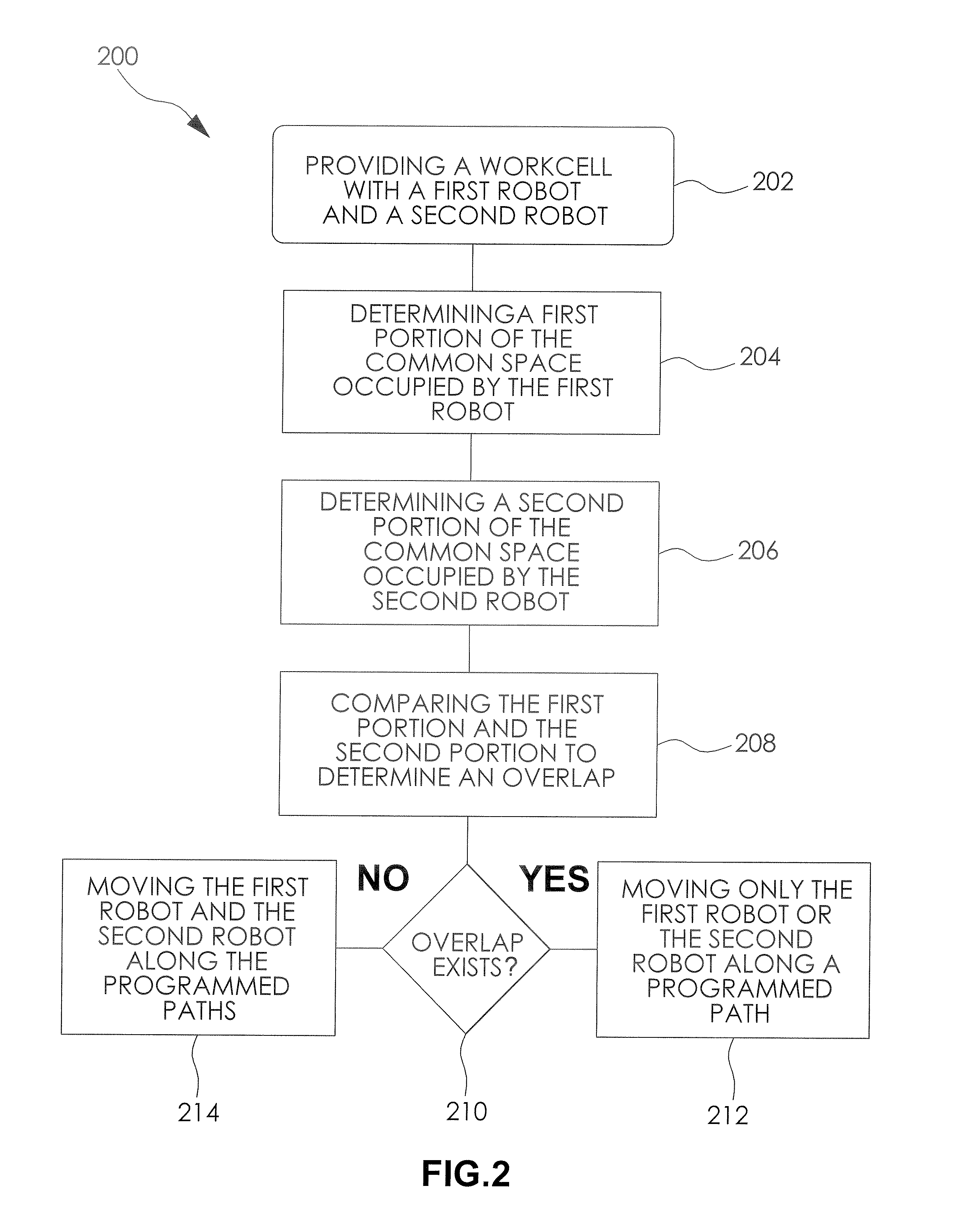Multi-arm robot system interference check via three dimensional automatic zones
a robot system and automatic zone technology, applied in the field of system control of a plurality of robots, can solve problems such as interference, robots and work pieces being handled, and potential interference between objects, and achieve the effects of avoiding interference, avoiding interference, and avoiding interferen
- Summary
- Abstract
- Description
- Claims
- Application Information
AI Technical Summary
Benefits of technology
Problems solved by technology
Method used
Image
Examples
Embodiment Construction
[0022]The following description is merely exemplary in nature and is not intended to limit the present disclosure, application, or uses. It should be understood that throughout the drawings, corresponding reference numerals also indicate like or corresponding parts and features. In respect of the methods disclosed, the steps presented are exemplary in nature, and thus, are not necessary or critical.
[0023]FIG. 1 is a schematic diagram showing a robotic system 2 for controlling collision avoidance between multiple robots. As nonlimiting examples, the robotic system 2 may be one of a body shop robot system, a waterjet cutting robot system, a laser welding robot system, an arc welding robot system, and a paint robot system having at least two robots. Other robotic systems 2 having a plurality of robots may also be employed, as desired.
[0024]The robotic system 2 includes a work cell 4 defining an envelope within which a first robot 6 and a second robot 8 are configured to operate. The fi...
PUM
 Login to View More
Login to View More Abstract
Description
Claims
Application Information
 Login to View More
Login to View More - R&D
- Intellectual Property
- Life Sciences
- Materials
- Tech Scout
- Unparalleled Data Quality
- Higher Quality Content
- 60% Fewer Hallucinations
Browse by: Latest US Patents, China's latest patents, Technical Efficacy Thesaurus, Application Domain, Technology Topic, Popular Technical Reports.
© 2025 PatSnap. All rights reserved.Legal|Privacy policy|Modern Slavery Act Transparency Statement|Sitemap|About US| Contact US: help@patsnap.com



